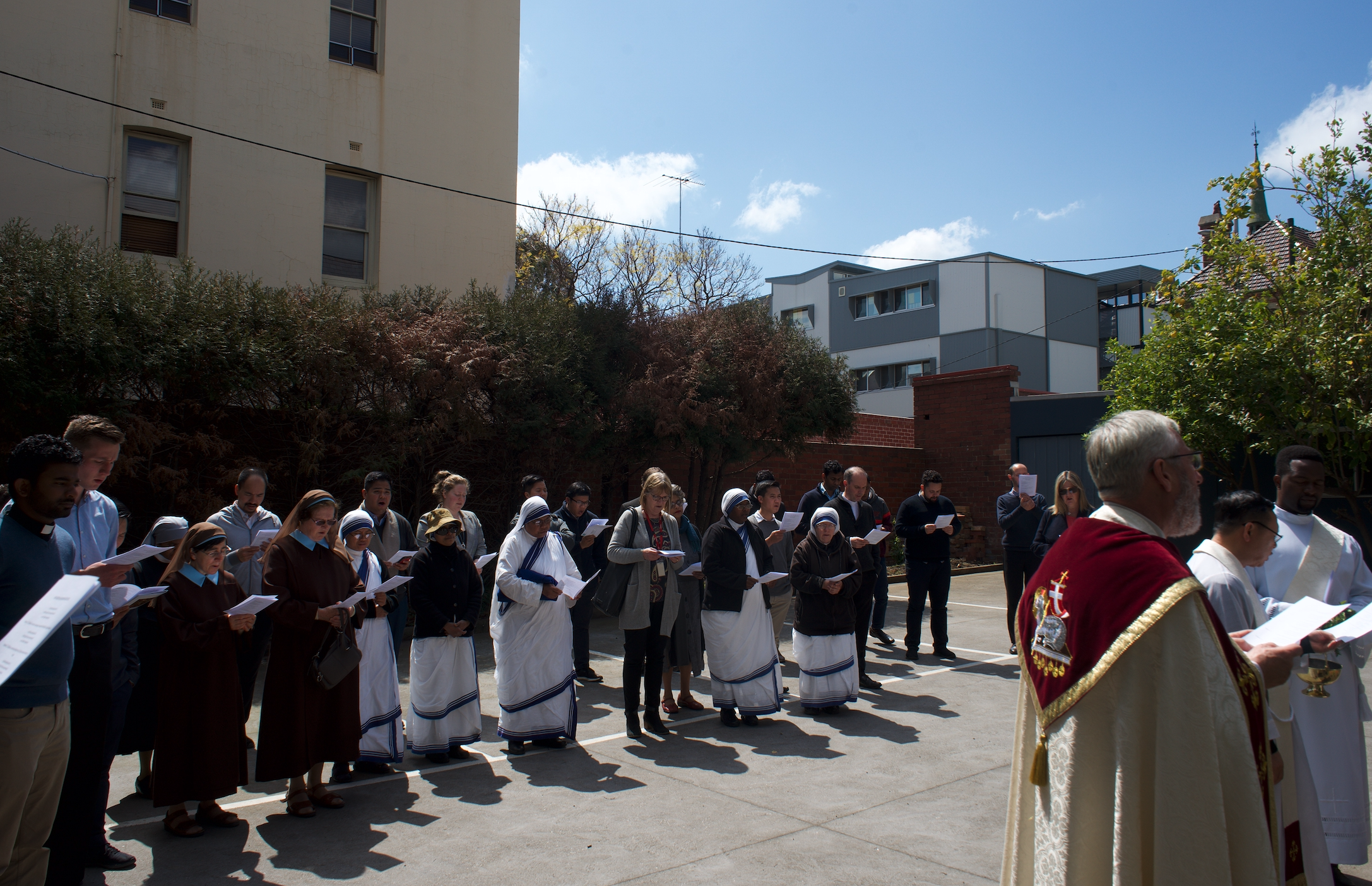Father Denis Stanley
As you pass back from Holy Communion in our chapel, at the moment the new statue of St Therese is rather startling. However, we know that time and weather will dull the bright whiteness of the statue that we bless and dedicate today. But I hope we don’t get used to her; I hope that she doesn’t blend back into the scenery unnoticed and taken for granted.
Therese, even if we know a little of her story, could have easily faded back into history, forgotten and unknown. After all, she chose an obscure and hidden life in the Carmel of Lisieux – and that’s what she wanted – and she would have remained lost to history if were not for that book she was asked to write – the story of a soul.
So why should we take any notice of her? Why should her image continue to startle us into prayer and reflection? Why have we labored to set up a statue of Therese in the seminary? Why here of all places?
Yes, she was a deep prayer. Yes, she loved the scriptures. Yes, she had a heart for mission. Yes, she was courageous – a gift of the spirit we all need to be Christians at this time. Yes, she possessed freedom of heart to offer all to Jesus. Yes, she empowered her poverty, weakness, and smallness and made them strong as she learned to lean on god’s grace alone.
But there is one aspect of her life that speaks especially to those who live life in community – life in the seminary – the love with which she learned to live with her sisters. She navigated the risk of the community by the way she learned to love. It’s difficult to learn to live with others, with their everydayness and ordinariness. They let us down – we can let each other down.
Life in the community for Therese – in the Carmel of Lisieux - was not always easy. It was as a shock to her after leaving the cozy safety of her strong and beloved family life. Forging a Christian community with a group of strangers – even strangers with a common purpose – is not simple or straightforward. Seminarians, amongst many, know this.
Her “little way” of love was inspired by her insight to give her all to the Lord of love by drawing all things to reconciliation and healing – which is the work of Jesus always active amongst us – how? Through the ordinary, everyday encounters and trials of life. No matter how small the field of action may seem to be, the paschal mystery can operate where ever there is a human being ready to be open to the risk and cost of this healing and reconciliation.
The whole of Therese’s teaching learned and refined in the nitty-gritty of community life, was filled with this insistence on love, and the use of the raw material of living, as an expression of love. Her “little way” was a vigorous going-out-of herself to grasp what life was offering her even in the smallest opportunities of that community life afforded her. He “little way” gives flesh and bone to the words from the first letter of St. John, “my dear people, let us love one another”.
What does that mean? And can we do it? Can we live in our communities like that? Navigating the risk of the community? That is why we cannot ignore Therese of Lisieux – her life, her words. That’s what her statue is here. Not simply as a decorative piece of art – god forbid – how Therese herself would have been annoyed as being thought of a piece of art.
As Therese said towards the end of her life, “I have never sought anything but the truth.” That is why her statue is here –– as we return to our places after receiving the body of the lord – she stands as a challenge, a rebuke, and encouragement to truly become what we have received – the body of Christ.






